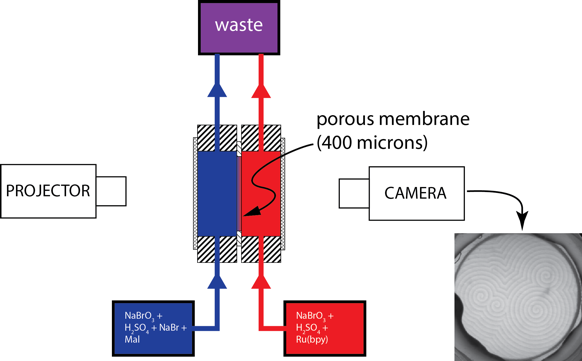

Higher complexity in nature emerges from interactions between simpler systems. Coupling discrete oscillators, for example, gives rise to large-scale structures such as spiral wavefronts and chimeras. Here we explore emergence in a pair of coupled spatially extended pattern forming systems.
The Belousov-Zhabotinsky reaction is an oscillating chemical reaction wherein a catalyst periodically cycles between a reduced and an oxidized state. This cycling produces spatiotemporal patterns, typified by spiral or target waves in two dimensions. Here we report on the effects of coupling two separate, two-dimensional domains of the BZ reaction using a light sensitive variant of the BZ reaction and a video feedback system. In the weak coupling limit we find that the system forms bound pairs of spiral waves with quantized orbits. In the strong coupling limit the systems completely synchronize.